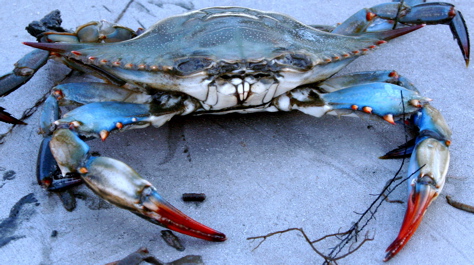Scientific survey shows solid blue crab stock improvement
The Virginia Marine Resources Commission today released the results of the 2016 blue crab winter dredge survey, which shows another year of growth in the stock and forecasts an improved harvest in 2016.
Conducted annually by the Virginia Insitute of Marine Science and the Maryland Department of Natural Resources since 1990, the winter dredge survey is the primary assessment of Chesapeake Bay’s blue crab population. Survey scientists employ crab dredges to sample blue crabs at 1,500 sites throughout the Bay from December through March. By sampling during winter when blue crabs are buried in the mud and stationary, the scientists can estimate, with good precision, the number of crabs present.
In releasing VMRC's interpretation of this year's survey results, Commissioner John M.R. Bull says, "We now have back-to-back years of solid growth in this important fishery. The crab stock has been on a rollercoaster for most of the last decade. We’ve seen a few great years of reproduction followed by awful years of abundance. Two years does not make a trend, and this news inspires both wary optimism and cautious management.”
Professor Rom Lipcius, who oversees the Blue Crab Winter Dredge Survey at VIMS, notes that an integrated advisory report combining data from the winter dredge survey and several other blue crab surveys at VIMS and other scientific institutions will be released in May.
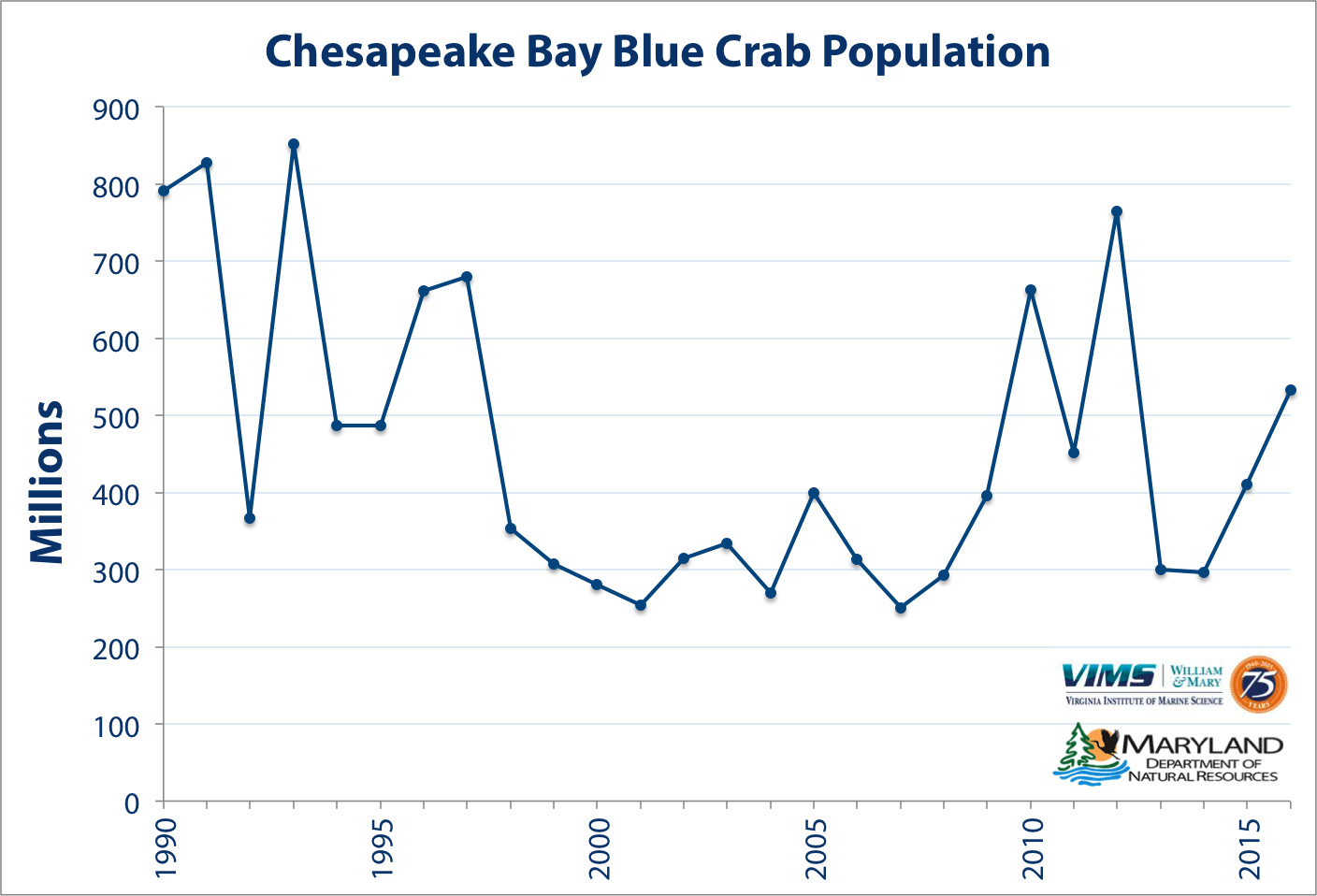 2016 Dredge Survey Results
2016 Dredge Survey Results
The results of the 2016 Blue Crab Winter Dredge Survey show the total population of blue crabs in Chesapeake Bay climbed 34% to a total of 533 million. This is the fourth highest level in two decades, since 1996, and builds on last year’s 38% boost in abundance.
Stock improvements were found in both female and male crabs, as well as juveniles and adults.
The spawning female stock almost doubled, from 101 million to 194 million, while the adult male stock more than doubled, from 44 million to 91 million. These are the second highest levels recorded since 1995 and bode well for a good crab harvest this year. Still, this level of spawning age female crabs remains below the scientifically recommended target of 215 million but well above the minimum safe threshold of 70 million crabs.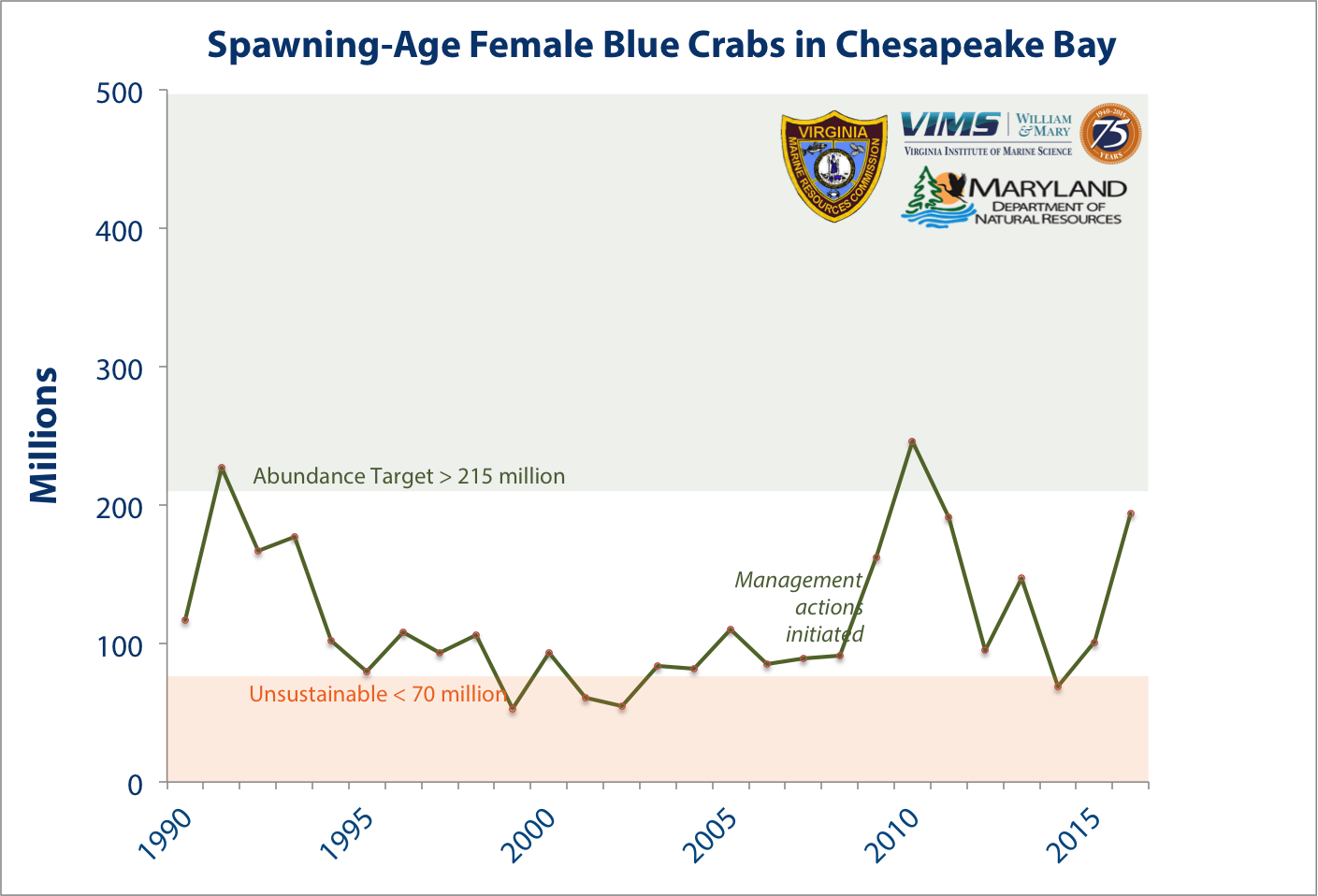
The juvenile abundance increased only slightly, from 269 million to 271 million, which is just above the average level of juveniles recorded over the past almost 30 years.
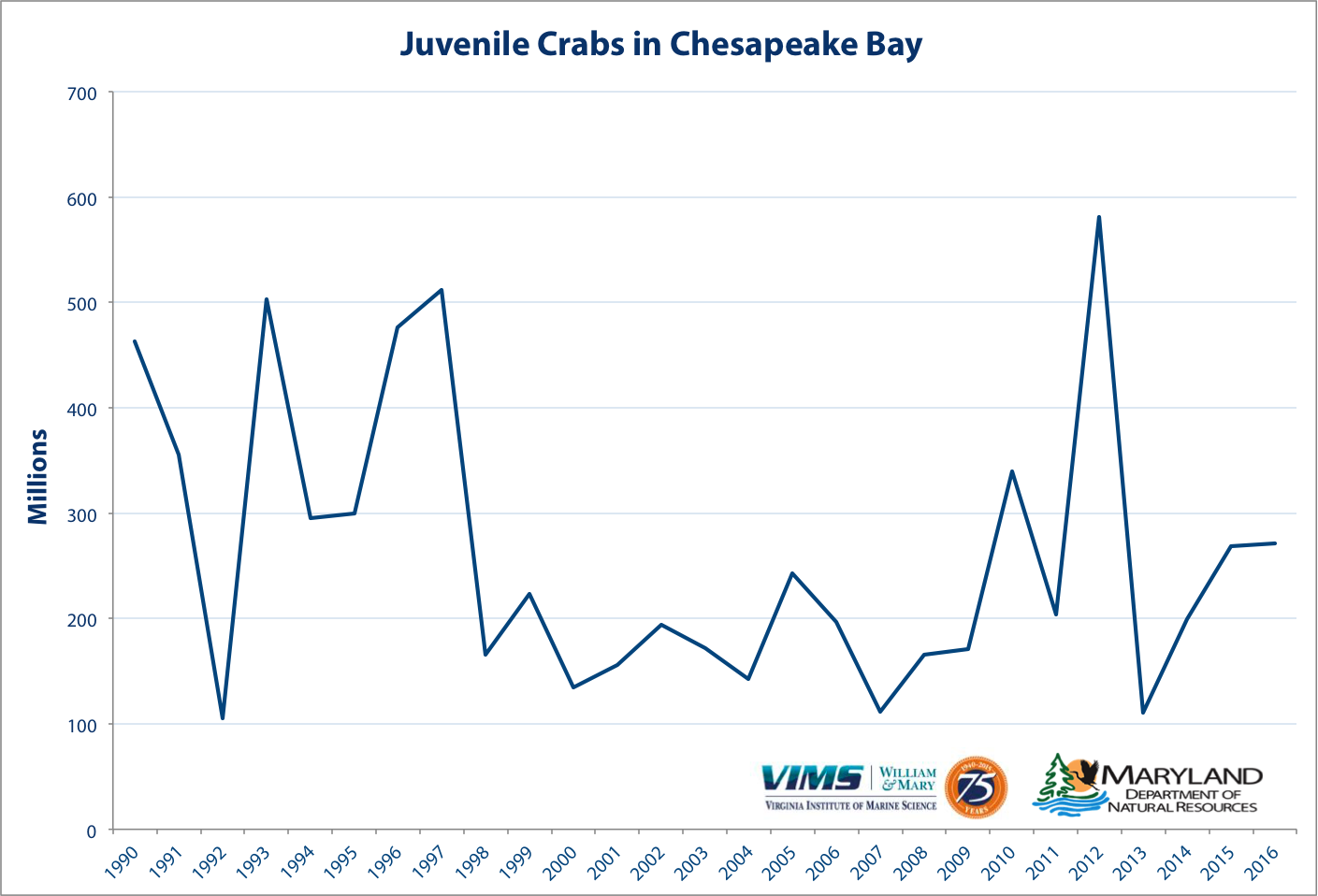 The bay-wide crab harvest last year increased by 42%, to 50 million pounds.
The bay-wide crab harvest last year increased by 42%, to 50 million pounds.
VMRC Crab Management
Increased overall abundance means commercial crabbers can expect to see more crabs in their crab pots this year than last year and to more often catch their daily bushel limits. Some adjustment of harvest limits may be warranted.
Crab spawning naturally fluctuates and can be affected by wind, currents, weather, cannibalism, and increased predation on crabs by other species. In recent years, unexpected predation events and stressful combinations of environmental factors have caused dramatic downturns in crab stock abundance. This highlights the need for fishery managers to continue to enhance resilience of the stock through adaptive management to compensate for unusual or extreme environmental conditions.
A bay-wide 10% crab harvest reduction enacted in 2014 by VMRC, Maryland, and the Potomac River Fisheries Commission to combat low overall crab abundance and to boost a dangerously depleted female spawning stock appears to have been effective.
“Two years ago, the number of adult female crabs were so low that a harvest cut was necessary to help rebuild them,’’ says Bull. “Now that the stock has improved, we need to be cautious and make prudent management decisions that further improve the stock and increase the stock’s resilience to factors outside of anyone’s control.”
In 2014, Bay fishery managers refined their management regimen to focus on conserving juvenile crabs as well as spawning age female crabs. Each year’s juveniles become the next year’s spawning stock. Conserving more juveniles when they reach market size in the fall and emerge from hibernation in the spring increases the likelihood they will survive to spawn another generation of abundant crabs in the summer.
“This recent success in management seems to have built some resilience in the stock,’’ says Lipcius. “We’re seeing a rebound in abundance and a buffer on unpredictable environmental disturbances that can cause severe declines in the stock.'
Peyton Robertson, chair of the Chesapeake Bay Program's Sustainable Fisheries Goal Implementation Team, says "The increase in blue crab numbers is a positive sign toward the commitment of the 2014 Chesapeake Bay Watershed Agreement to rebuild long term sustainability of blue crab populations."
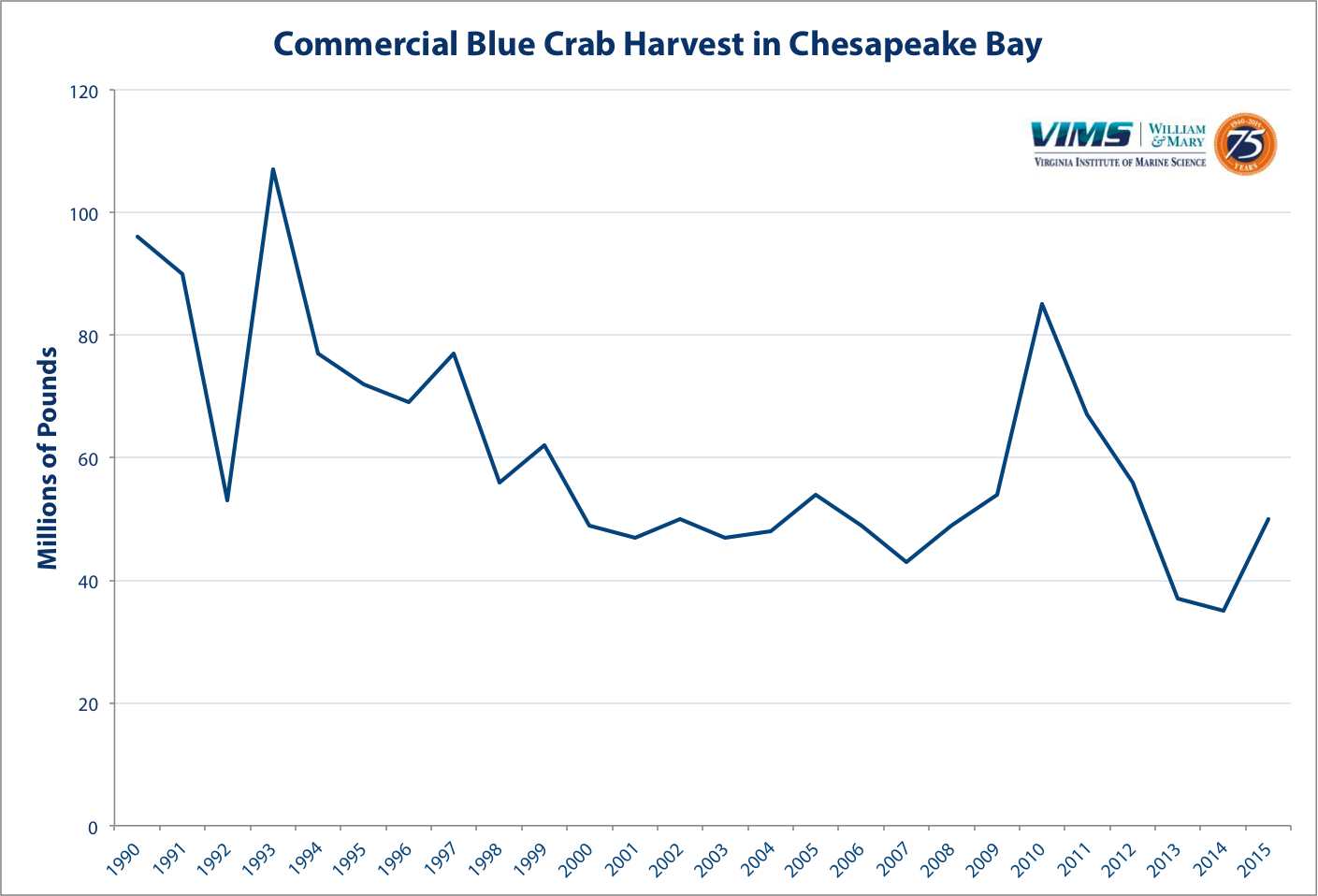 The Chesapeake Bay Stock Assessment Committee (CBSAC) is reviewing the new survey results and will release their full analysis of the results in the 2016 Blue Crab Advisory Report this summer. The advisory report is used by managers as they review and update fishery regulations.
The Chesapeake Bay Stock Assessment Committee (CBSAC) is reviewing the new survey results and will release their full analysis of the results in the 2016 Blue Crab Advisory Report this summer. The advisory report is used by managers as they review and update fishery regulations.
“While the spawning stock of adult females has increased to a healthy level, it is still below the established target of 215 million. The highly variable nature of blue crab reproductive success means that caution must be maintained when considering management adjustments so harvests do not adversely affect future spawning potential,” says Glenn Davis, chair of the CBSAC.
VMRC will begin discussions with its crab management advisory committee on options to adjust harvest restrictions while maintaining higher abundance. The Commission board will be briefed on the survey results at its April 25 meeting.


